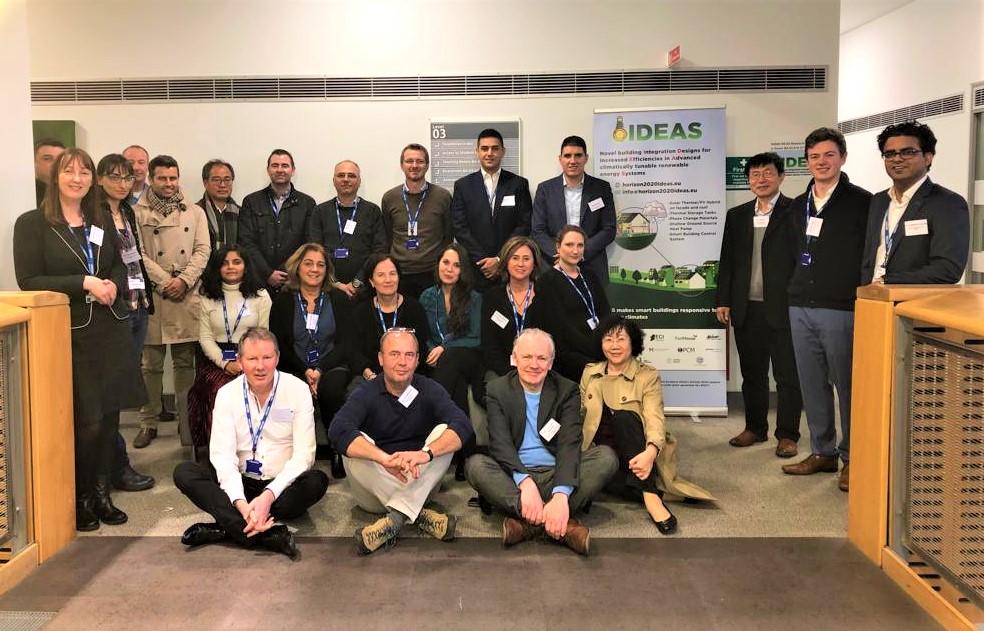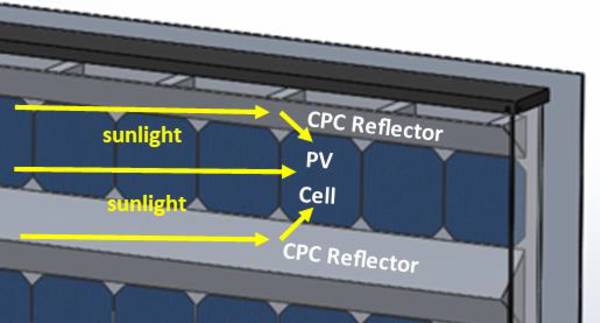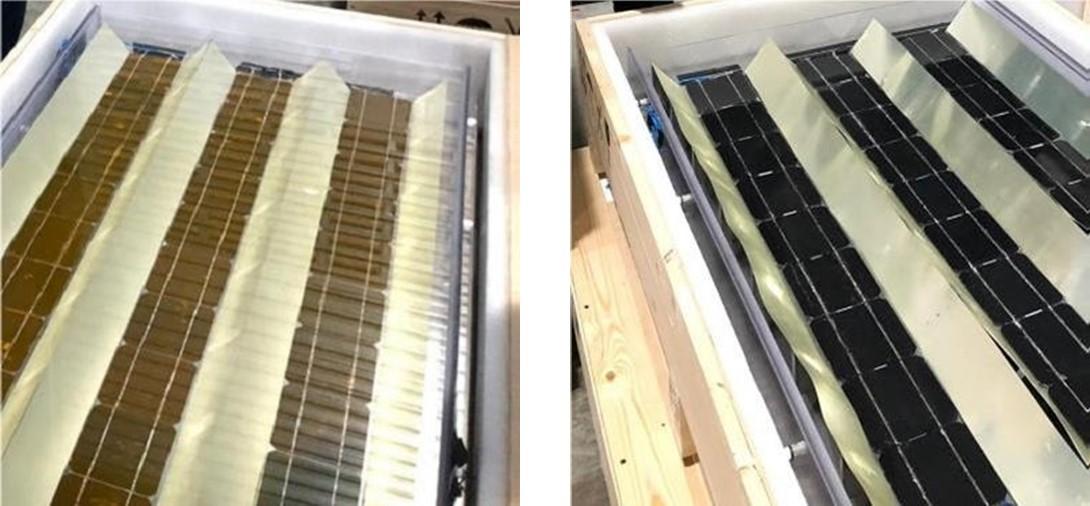IDEAS progress outlined in Ulster University Belfast Workshop
Welcome to the IDEAS Horizon 2020 research projects Newsletter, providing an update on the progress of our work, our findings, and results to inform interested citizens, building energy sector experts, and public housing policy makers. Professor Sarah MacCormack of Trinity College Dublin leads our team of partners who are applying the latest material sciences and engineering techniques to produce a suite of state-of-the-art solutions for improved energy efficiencies. Trinity College, Dublin, is developing the IDEAS hybrid solar PV/thermal panel in association with Ulster University. This panel will combine the benefits of Compound Parabolic Concentrators (CPC), a Luminescent Downshifting (LDS) layer, and Phase Change Materials (PCM).
The novel CPC design demonstrated at the partners meeting concentrates the energy of solar rays to achieve additional electrical efficiencies of >15%. The LDS layer will further increase solar cell efficiency and offers the opportunity of varying the colour of the cell for additional architectural and aesthetic applications. The PCM backing devised in Ulster University by Professor Ming Huang and her team on the PV panel array also stores thermal energy which is distributed by through a heat pump.
The novel IDEAS hybrid panel is being deployed at the University of Ferrara test site. The panels potentially could be deployed on rooftops and building facades across Europe to maximize energy and greatly improve building efficiency.
Close up of the IDEAS hybrid solar cell array.
The cell characteristics outlined in Belfast University could achieve combined efficiencies of greater than 40% of the traditional PV or Solar Thermal systems.
Compound Parabolic Concentrator (CPC)
Professor McCormack working with Anita Ortega in the Civil, Structural & Environmental Engineering, Trinity College, Dublin have produced a reflector array for the panels that redirects additional sunlight, focusing it onto the PV cells. These CPC panels installed on building
facades should operate very efficiently with potential for wider solar generation opportunities.
The LDS: Solar Cells to Dye for
Collaboration between LEITAT, Spain, LNEG, Portugal, and TCD Ireland, a newly developed nano particle dye coating applied to the surface of the PV cells changes the sunlight’s wavelength so as to capture yet more energy —up to 20% more. The IDEAS partnership is producing dyes of various colours which will provide aesthetic possibilities which will strengthen the case for deploying the panels on building facades.
PV Cells with orange LSD layer dye (left) and a reference with no dye (right)
